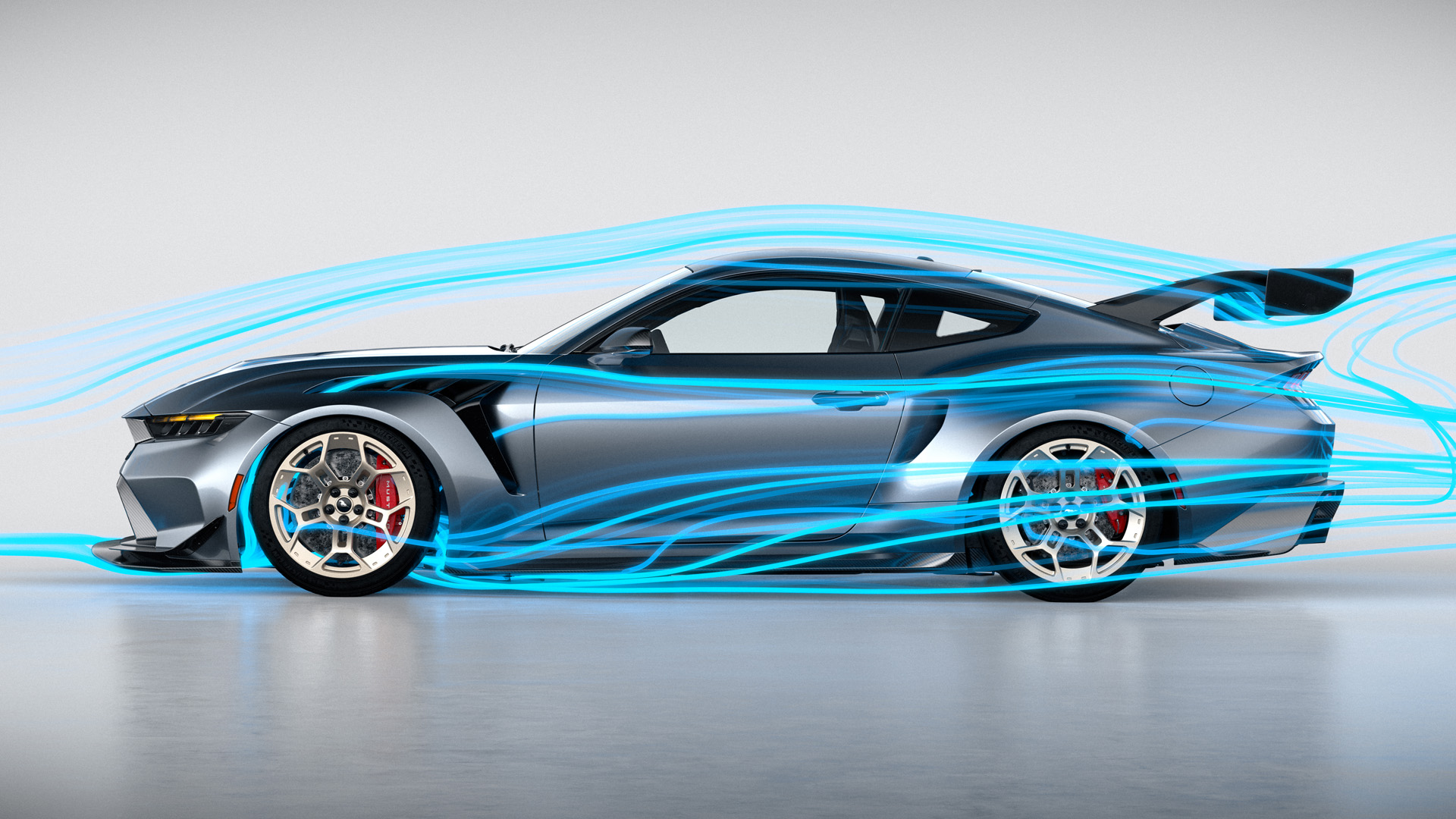

The Ford Mustang GTD is the ultimate Mustang, especially if you’re looking to hit the track. With a rear transaxle, tons of carbon fiber, and a price tag in the neighborhood of $300,000, it has its sights set on European supercars and conquering the Nurburgring. To achieve those goals, it’s deploying a sophisticated suite of both passive and active aerodynamics, working together to reduce drag or increase downforce when necessary.
These types of aerodynamic features are not legal in many racing series like the GT3 class where the eponymous Ford Performance Mustang races. On the street, however, there are no such rules.



To better explain how the system works, Ford has released a series of animations showing how the car’s massive rear wing and front splitter flaps can move to cut drag or adhere the car to the road, depending on the situation. The systems are simple at a glance but are more complex under closer examination.
The most visible feature is the car’s Formula 1-style DRS rear wing. It works just like it does on open-wheeled race cars. When downforce is needed, it’s closed, forcing the rear end of the car into the ground to keep the car stable at high cornering speeds. On straightaways, it opens up, reducing downforce and the associated drag to attain higher top speeds more efficiently.

The way the front splitter flaps work is a little more complex. The splitter and underbody generate downforce in a few ways. Stalling these devices—not allowing smooth airflow around them—will render them mostly useless at producing downforce. This means that the drag that is associated with sticking the car to the road aerodynamically will also go away.
Ford stalls much of the car’s underbody aero using two small flaps located near the front wheels. Opening them reduces drag while keeping them closed allows for smooth airflow and more downforce generation. There’s a lot going on under the Mustang GTD, so disturbing the airflow below the car likely does a lot to improve the car’s speed on the straights.

Ford hasn’t said how many Mustang GTDs it’s going to make or when the car is set to take to the Nurburgring Nordschleife, but the street-legal 850-horsepower supercharged track monster is set to begin arriving in customers’ hands around late 2024.
Got a tip? Email tips@thedrive.com